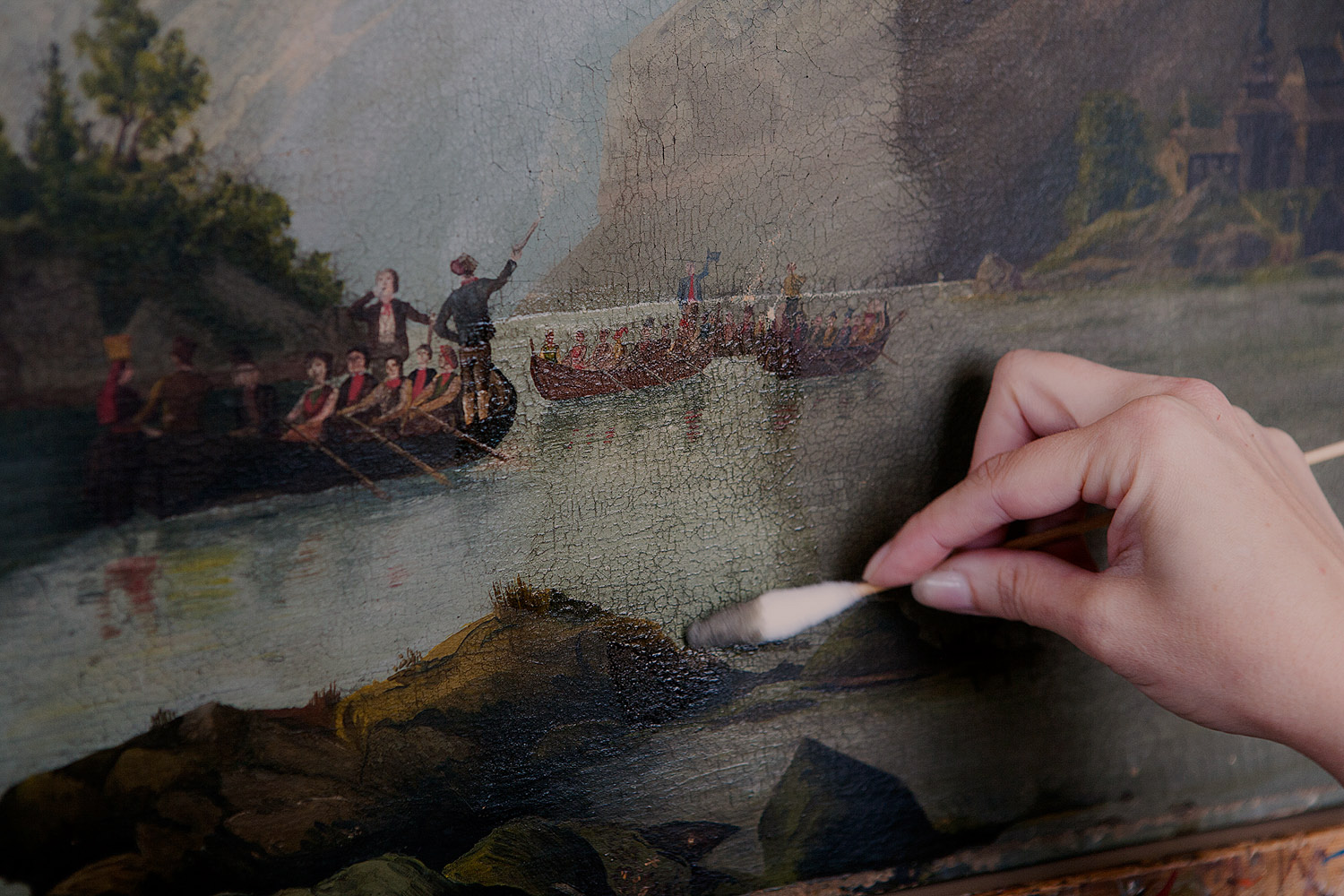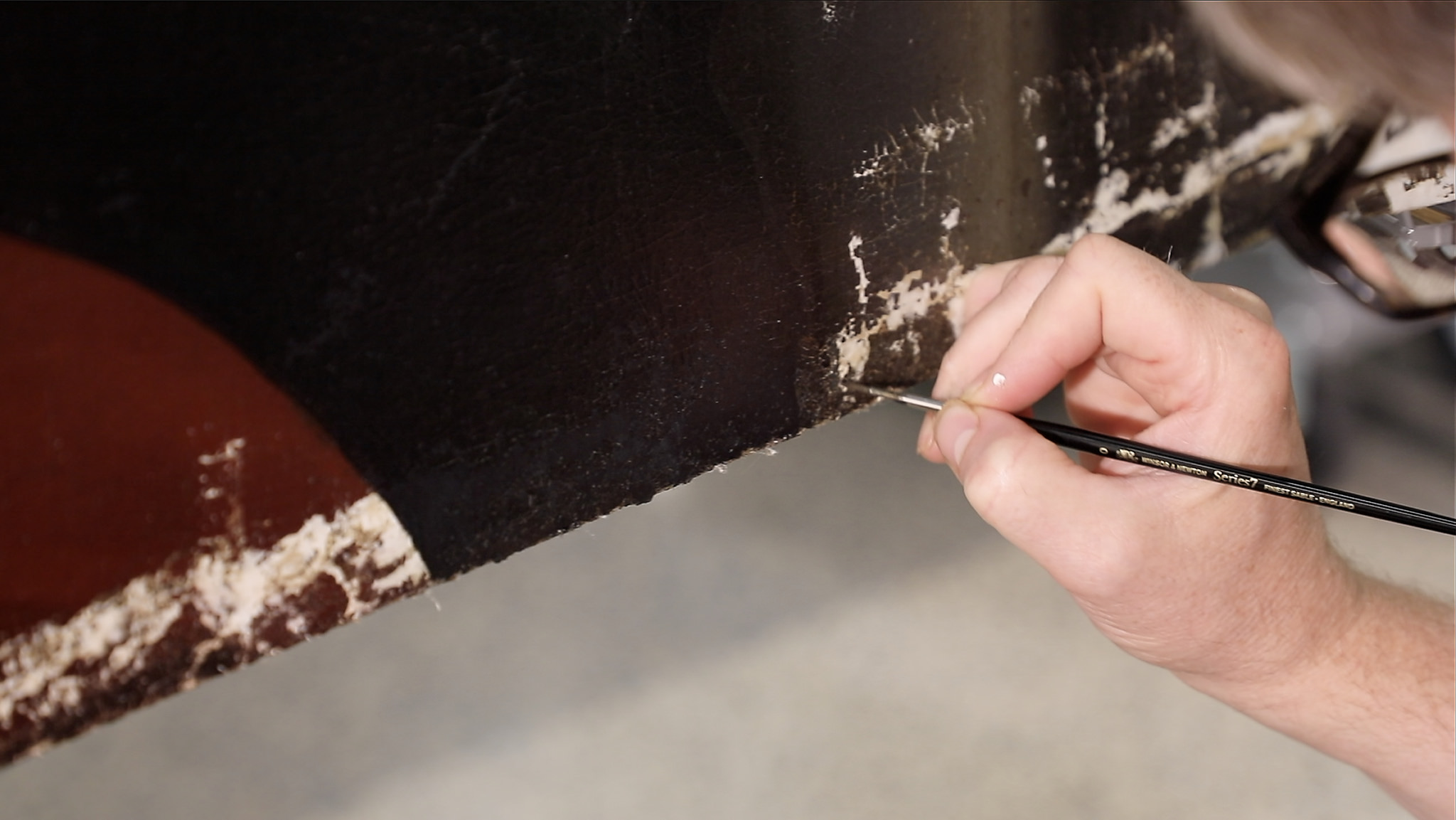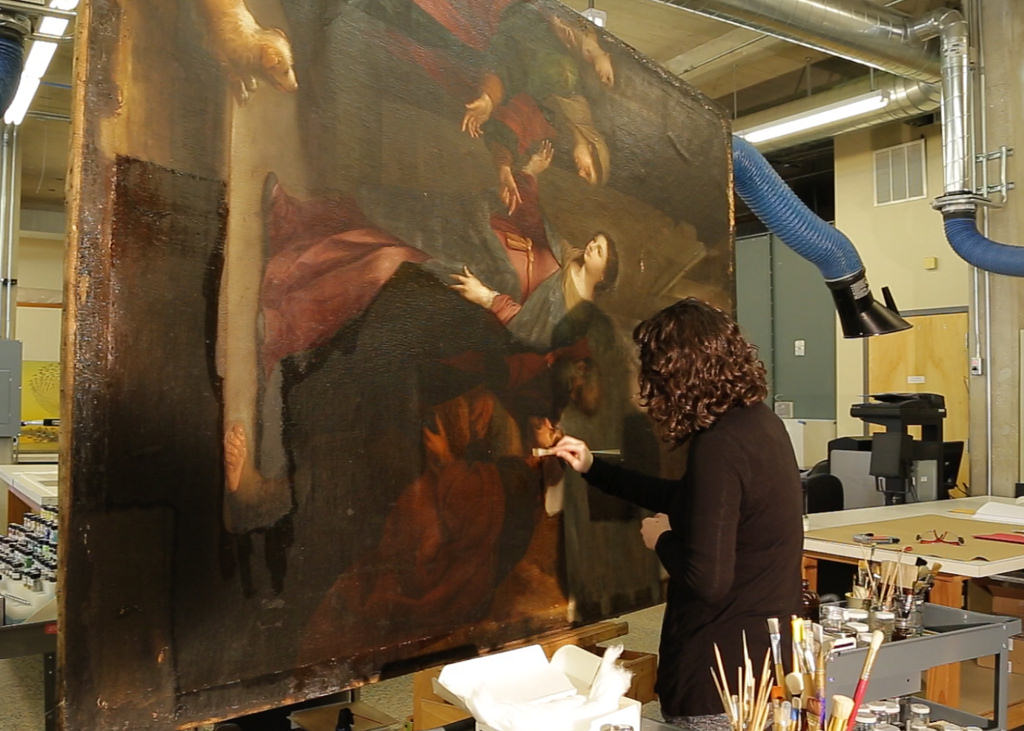The Paintings Department appreciates the importance of being a custodian of art and strives to do its part to preserve paintings by using the least invasive treatments possible for each piece.
The conservators recognize that a work of art is more than the sum of its parts and can only be enjoyed by respecting the original intent of the artist. While a work of art can be timeless, the materials used are vulnerable to age and environmental conditions. Many types of damage occur to paintings, including paint losses and flaking paint, canvas tears, discolored varnish, degradation of previous restoration campaigns, and accumulation of layers of grime and dust.
Equally important to treating the paint layer is paying meticulous attention to the support on which it was applied. The support, or the structure of a painting, includes canvas, panel, board, and stretchers or strainers. The Center restores all material aspects of paintings using conservation-grade solvents, adhesives, and paints for the treatment of each individual work.
“The Conservation Center’s recommendation to clean the Helen Frankenthaler painting and refresh the mat with new linen yielded impeccable results, and we very much appreciated the expert analysis and advice provided by The Center’s team. With their guidance, we did not compromise the value of the canvas and it was brought back to its original vibrancy. The attention to every detail from analysis to conservation, shipping and handling of our painting was extremely professional and knowledgeable. We look forward to further collaborations with The Conservation Center’s team.”






